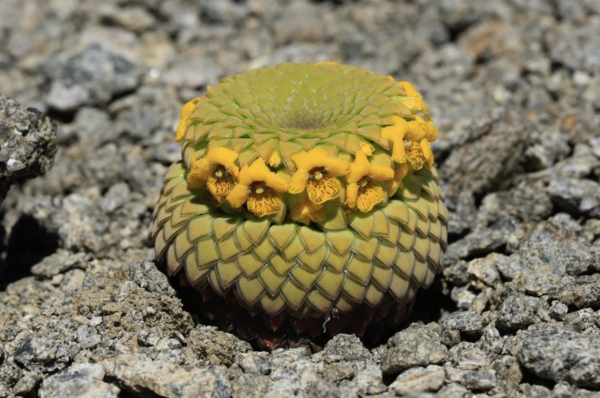In the quiet corners of the earth, where the land meets rock and shadow, there exists a humble yet captivating plant that catches the eye with its delicate grace. This plant is Viola imbricata, commonly known as the Imbricate Violet or the Overlapping Violet, a species of violet that speaks in whispers, telling tales of resilience and beauty in its soft, unassuming way. Often overlooked in the grand theater of nature, it is a quiet artist, creating vivid landscapes with its charming blooms. With its modest yet striking appearance, Viola imbricata is a testament to the art of subtle beauty.

The first thing one notices about Viola imbricata is the stunning simplicity of its flower. Small but significant, the violet blooms appear like delicate brushstrokes against the canvas of the wild. Their petals, usually deep violet or lavender, are elegantly shaped and soft to the touch. Often, a pale, almost translucent white or yellow center contrasts against the rich hues, giving the flower an ethereal, otherworldly feel. These petals are not large or overpowering but rather possess a quiet elegance that captures attention without demanding it.
The flowers themselves are only a few centimeters across, yet their beauty far exceeds their size. They often grow in clusters, dotting the rocky terrain and grassy meadows in spring. Their vivid colors are in stark contrast to the duller greys and greens of the earth, creating a visual symphony that is both gentle and striking. It’s as though nature has chosen to whisper rather than shout, offering this tiny bloom as a tender reminder of the small but essential moments that fill the world.
While Viola imbricata may appear delicate, it is far from fragile. This plant thrives in conditions that would challenge more delicate species, growing in the cracks of rocks, the edges of forests, and in the open spaces between stones. It’s the kind of plant that knows how to make the most of limited resources, growing where few others dare to take root. It can often be found in mountainous or semi-arid regions, where it must withstand both the harsh sun and the chill of the wind. Yet, despite the challenges, it flourishes, its tenacity as beautiful as its blooms.
The plant’s resilience comes from its deep-rooted ability to adapt. It thrives in poor, well-drained soil and can endure periods of drought. Its roots dig deep into the rocky surface, finding moisture where others might fail. This survivalist spirit is often overshadowed by its delicate appearance, but it’s this very toughness that allows Viola imbricata to carve out a place for itself in the world. It is a perfect example of how nature can balance fragility with strength.
Like all violets, Viola imbricata carries with it symbolic meanings. In many cultures, violets are associated with modesty, loyalty, and humility. These qualities are embodied by the plant’s understated beauty—its flowers may not shout for attention, but they offer an unforgettable softness, a gentle presence that lingers in the memory. The violet’s modesty reflects the simplicity and purity of nature itself: no grand gestures, just quiet beauty in every petal.
Viola imbricata, in particular, evokes a sense of serenity and patience. It grows in places that are often overlooked, in the cracks between rocks or along forgotten paths, yet it finds its moment to bloom. It is a reminder that beauty does not always need to be loud or flamboyant to be noticed. Sometimes, the most profound beauty comes from the quietest places.
In the language of flowers, violets have also been associated with love and affection. The Imbricate Violet, with its soft, welcoming blooms, can be seen as a gentle expression of love that is pure and true. It doesn’t demand recognition, yet it shares its beauty freely, offering a lesson in quiet generosity. This quiet, unassuming nature makes it a symbol of the kind of love that is steadfast and enduring, much like the plant’s survival through tough conditions.

Despite its wild nature, Viola imbricata is also a cherished addition to gardens. Its ability to thrive in rocky, well-drained soil makes it an excellent choice for rock gardens or areas where other plants may struggle. In cultivated spaces, it can serve as a groundcover or accent plant, adding color and texture to the landscape. Gardeners appreciate its low-maintenance needs and its ability to bring a touch of wildness to more structured environments. Its vibrant blooms contrast beautifully with the stony surfaces of rock gardens, creating a natural, rustic charm.
Furthermore, Viola imbricata is also a valuable plant for attracting pollinators. Its gentle colors and sweet scent draw bees, butterflies, and other pollinators, helping to support the ecosystem. In this way, it contributes not only to the beauty of the garden but also to the health and sustainability of the surrounding environment.
Viola imbricata is a plant that seems to speak in poetry. Its colors, resilience, and quiet beauty combine to create an impression that stays with you long after you've left the garden or meadow. It’s the kind of flower that doesn’t need to be admired from afar; it invites you to get closer, to notice the little things, the details that make it so special. In a world that often values loudness and spectacle, Viola imbricata teaches us the art of subtlety. It reminds us that sometimes the most beautiful things are those that ask for nothing more than to be seen and appreciated in their quiet elegance.
In the end, the Imbricate Violet is a living poem—a delicate, resilient symbol of nature’s quiet artistry. It may not demand attention, but its beauty, strength, and grace are impossible to ignore.
animal tags: Viola-imbricata
We created this article in conjunction with AI technology, then made sure it was fact-checked and edited by a Animals Top editor.